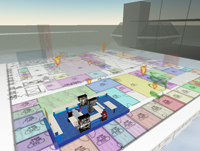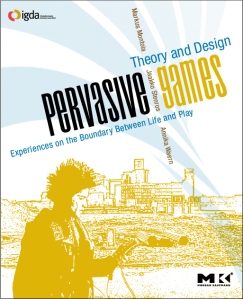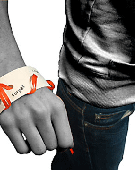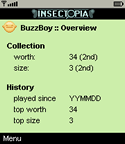May 24, 2016
Using Big Data in Cyberpsychology
Thanks to the pervasive diffusion of social media and the increasing affordability of smartphone and wearable sensors, psychologists can gather and analyse massive quantities of data concerning people behaviours and moods in naturalistic situations.

The availability of “big data” presents psychologists with unprecedented professional and scientific opportunities, but also with new challenges. On the business side, for example, a growing number of tech-companies are hiring psychologists to help make sense of huge data sets collected online from their actual and prospective customers.
The job description of a “data psychologist” not only requires perfect mastery of advanced statistics, but also the ability to identify the kinds of behaviours that are most useful to track and analyse, in order to improve products and business strategies. Psychological research, too, may be revolutionized from emerging field of big data. Until recently, online research methods were mostly represented by web experiments and online survey studies.
Example of topic areas included cognitive psychology, social psychology, but also health psychology and forensing psychology (for an updated list of psychological experiments on the Internet see this useful resource by the Hanover College Psychology Department).
However, the emergence of advanced cloud-based data analytics has provided psychologists with powerful new ways of studying human behaviour using digital footprints. An interesting example is CrowdSignal, a crowdfunded mobile data collection campaign that aims at building the largest set of longitudinal mobile and sensor data recorded from smartphones and smartwatches available to the community. As reported in the project’s website, the final dataset will include geo-location, sensor, system and network logs, user interactions, social connections, communications as well as user-provided ground truth labels and survey feedback, collected from a demographically diverse pool of Android users across the United States.
A further interesting service that well exemplifies the scientific potential of social data analytics is the “Apply Magic Sauce PredictionAPI” developed by the Psychometrics Centre of the University of Cambridge. According to the Cambridge researchers, this algorithm allows predicting users’ personality traits based on Facebook interactions (i.e., Facebook Likes). To test the validity of the tool, the team compared the predictions generated by computer algorithms and the personality judgments made by human. The results, which were reported on Proceedings of the National Academy of Sciences (Youyou et al., 2015, PNAS, 112/4, pp. 1036–1040), showed that the computers’ judgments of people’s personalities based on their digital behaviors were more accurate than judgments made by their close others or acquaintances.

However, the emergence of “big data psychology” presents also big challenges. For example, it is the advantages of this approach for business and research should take into account the issues related to ethical, privacy and legal implications that are unavoidably linked to the collection of digital footprints. On the methodological side, it is also important to consider that quantity (of data) is not synonimous with quality (of data interpretation).
In order to create meaningful and accurate models from behavioural logs, one needs to consider the role played by contextual variables, as well as the possible data errors and spurious correlations introduced by high dimensionality.
10:48 Posted in Big Data, Computational psychology, Pervasive computing, Research tools, Self-Tracking | Permalink | Comments (0)
Dec 24, 2013
NeuroOn mask improves sleep and helps manage jet lag
Via Medgadget
A group of Polish engineers is working on a smart sleeping mask that they hope will allow people to get more out of their resting time, as well as allow for unusual sleeping schedules that would particularly benefit those who are often on-call. The NeuroOn mask will have an embedded EEG for brain wave monitoring, EMG for detecting muscle motion on the face, and sensors that can track whether your pupils are moving and whether they are going through REM. The team is currently raising money on Kickstarter where you can pre-order your own NeuroOn once it’s developed into a final product.
Jul 23, 2013
A mobile data collection platform for mental health research
A mobile data collection platform for mental health research
22:57 Posted in Pervasive computing, Research tools, Self-Tracking, Wearable & mobile | Permalink | Comments (0)
Jul 18, 2013
Advanced ‘artificial skin’ senses touch, humidity, and temperature
Artificial skin (credit: Technion) Technion-Israel Institute of Technology scientists have discovered how to make a new kind of flexible sensor that one day could be integrated into “electronic skin” (e-skin) — a covering for prosthetic limbs.

Read full story
18:14 Posted in Pervasive computing, Research tools, Wearable & mobile | Permalink | Comments (0)
Aug 04, 2012
The Age of ‘Wearatronics’
Medgadget has an interesting article on the raise of ‘Wearatronics’, a new trend in which new materials and interconnects have made circuit assemblies flexible and, as a result, embeddable. Such flexible electronic arrays may be embedded into textiles in order to, for example, measure the wearer’s vital signs or even generate and store power.
According to GigaOm's research report The wearable-computing market: a global analysis the wearatronics market for just health and fitness products is estimated to reach 170 million devices within the next five years.
In this video, Bloomberg's Sheila Dharmarajan reports on the outlook for wearable electronics on Bloomberg Television's "Bloomberg West." (Source: Bloomberg)
Also interesting is this TED speech from David Icke, who creates breathable, implantable microcomputers that conform to the human body, which can be used for a variety of medical applications.
18:10 Posted in Future interfaces, Pervasive computing, Wearable & mobile | Permalink | Comments (0)
May 07, 2012
Watch-like wrist sensor could gauge the severity of epileptic seizures as accurately as EEG
From the MIT press release

Researchers at MIT and two Boston hospitals provide early evidence that a simple, unobtrusive wrist sensor could gauge the severity of epileptic seizures as accurately as electroencephalograms (EEGs) do — but without the ungainly scalp electrodes and electrical leads. The device could make it possible to collect clinically useful data from epilepsy patients as they go about their daily lives, rather than requiring them to come to the hospital for observation. And if early results are borne out, it could even alert patients when their seizures are severe enough that they need to seek immediate medical attention.
Rosalind Picard, a professor of media arts and sciences at MIT, and her group originally designed the sensors to gauge the emotional states of children with autism, whose outward behavior can be at odds with what they’re feeling. The sensor measures the electrical conductance of the skin, an indicator of the state of the sympathetic nervous system, which controls the human fight-or-flight response.
In a study conducted at Children’s Hospital Boston, the research team — Picard, her student Ming-Zher Poh, neurologist Tobias Loddenkemper and four colleagues from MIT, Children’s Hospital and Brigham and Women’s Hospital — discovered that the higher a patient’s skin conductance during a seizure, the longer it took for the patient’s brain to resume the neural oscillations known as brain waves, which EEG measures.
At least one clinical study has shown a correlation between the duration of brain-wave suppression after seizures and the incidence of sudden unexplained death in epilepsy (SUDEP), a condition that claims thousands of lives each year in the United States alone. With SUDEP, death can occur hours after a seizure.
Currently, patients might use a range of criteria to determine whether a seizure is severe enough to warrant immediate medical attention. One of them is duration. But during the study at Children’s Hospital, Picard says, “what we found was that this severity measure had nothing to do with the length of the seizure.” Ultimately, data from wrist sensors could provide crucial information to patients deciding whether to roll over and go back to sleep or get to the emergency room.
Read the full press release
16:59 Posted in Cybertherapy, Pervasive computing, Wearable & mobile | Permalink | Comments (0)
Apr 29, 2012
The SoLoMo manifesto
The SoLoMo Manifesto is a free-downloadable white paper that explores the mega-markets of social, local, and mobile as a cohesive ecosystem of marketing technologies.

The manifesto has been produced by MomentFeed, a location-based marketing platform for the enterprise. It's an interesting reading. You can download this free whitepaper here.
13:18 Posted in Locative media, Pervasive computing | Permalink | Comments (0)
Mar 03, 2011
Online predictive tools for mental illness: The OPTIMI Project

OPTIMI is a r&d project funded by the European Commission under funded by the European Union's 7th Framework Programme "Personal Health Systems - Mental Health" .
The project has two key goals goals: a) the development of new tools to monitor coping behavior in individuals exposed to high levels of stress; b) the development of online interventions to improve this behavior and reduce the incidence of depression.
To achieve its first goal, OPTIMI will develop technology-based tools to monitor the physiological state and the cognitive, motor and verbal behavior of high risk individuals over an extended period of time and to detect changes associated with stress, poor coping and depression.
A series of “calibration trials” will allow the project will test a broad range of technologies. These will include wearable EEG and ECG sensors to detect subjects’ physiological and cognitive state, accelerometers to characterize their physical activity, and voice analysis to detect signs of depression. These automated measurements will be complemented with electronic diaries, in which subjects report their own behaviors and the stressful situations to which they are exposed. Further, the project will use machine learning to identify patterns in the behavioral and physiological data that predict the findings from the psychologist and the corticol measurements.
Although the project's objectives are very ambitious, OPTIMI represents one of the most advanced initiatives in the field of Positive Technology, so I am very excited to follow its progresses and see how far it can go.
19:03 Posted in Cybertherapy, Pervasive computing, Research tools, Self-Tracking, Wearable & mobile | Permalink | Comments (0)
Dec 08, 2009
The Application and Management of Personal Electronic Information
The First International Forum on the Application and Management of Personal Electronic Information, organized by the MIT SENSEable City Lab, gathered many stakeholders from multiple disciplines to share on the issues surrounding the application and management of personal electronic information:
The goal of this forum is to explore the novel applications for electronic data and address the risks, concerns, and consumer opinions associated with the use of this data. In addition, it will include discussions on techniques and standards for both protecting and extracting value from this information from several points of view: what techniques and standards currently exist, and what are their strengths and limitations? What holistic approaches to protecting and extracting value from data would we take if we were given a blank slate?
Position papers and presentations are now online.
23:11 Posted in Pervasive computing, Positive Technology events, Wearable & mobile | Permalink | Comments (0) | Tags: personal electronic information, mit senseable city
May 27, 2009
New book on Pervasive Games
| New book on Pervasive Games: “Pervasive Games: Theory and Design - Experiences on the Boundary between Life and Play ” by Markus Montola, Jaakko Stenros and Annika Waer (editors) published by Morgan Kauffman |
“Quickly emerging from the fast-paced growth of mobile communications and wireless technologies, pervasive games provide a worldwide network of potential play spaces. Now games can be designed to be played in public spaces like streets, conferences, museums and other non-traditional game venues – and game designers need to understand the world as a medium—both its challenges and its advantages.
This book shows how to change the face of play—who plays, when and where they play and what that play means to all involved. The authors explore aspects of pervasive games that concern game designers: what makes these games compelling, what makes them possible today, how they are made and by whom. For theorists, it provides a solidtheoretical, philosophical and aesthetic grounding of their designs. Pervasive Games covers everything from theory and design to history and marketing. Designers will find 13 detailed game descriptions, a wealth of design theory, examples from dozens of games and a thorough discussion of past inspirations—directly from the game designers themselves.“
17:54 Posted in Locative media, Pervasive computing | Permalink | Comments (0) | Tags: pervasive games
Jul 11, 2007
MIT Media Lab: Responsive Environment Group

"Dual reality" is the concept of maintaining two worlds, one virtual and one real, that reflect, influence, and merge into each other by means of deeply embedded sensor/actuator networks. Both the real and virtual components of a dual reality are complete unto themselves, but are enriched by their mutual interaction. The Dual Reality Media Lab is an example of such a dual reality, as enabled the Plug sensor / actuator network that links our actual lab space to a virtual lab space in the Second Life online virtual world. [MOV]
21:47 Posted in Pervasive computing | Permalink | Comments (0) | Tags: interreality
Mar 17, 2007
Pigeonbots
From Practical Neurotechnology
Scientists at the Robot Engineering Technology Research Center of east China's Shandong University of Science and Technology claim to have implanted micro electrodes in the brain of a pigeon so they can command it to fly right or left or up or down.
The implants stimulated different areas of the pigeon's brain according to signals sent by the scientists via computer, and forced the bird to comply with their commands.
http://blog.wired.com/defense/2007/02/cyborg_flying_r.html
http://tenementpalm.blogspot.com/2007/02/psb-buys-tiny-ge...
http://english.people.com.cn/200702/27/eng20070227_352761...
14:51 Posted in Pervasive computing | Permalink | Comments (0) | Tags: brain-computer interface
Feb 24, 2007
RFID Powder Developed By Hitachi

Hitachi researchers have developed a new micro-miniaturized radio frequency identification (RFID) chip that is 64 times smaller than their currently available 0.4 x 0.4 mm mu-chips.
At 5 microns thick, the RFID chips can more easily be embedded in sheets of paper, meaning they can be used in paper currency, gift certificates and identification
15:23 Posted in Pervasive computing | Permalink | Comments (0) | Tags: rfid, ambient intelligence
Jan 10, 2007
From proactive computing to proactive people in Ubicomp
From Pasta and Vinegar
Rogers, Y. (2006) Moving on from Weiser’s vision of of calm computing: engaging UbiComp experiences. In: P. Dourish and A. Friday (Eds.) Ubicomp 2006 Proceedings, LNCS 4206, pp. 404-421, Springer-Verlag.
In this paper, the author starts from the classical ubicomp description by Mark Weisre about a potential era of “calm computing” and explains how research in that domain did not match these expectations. The most important stance of Yvonne Rogers lays in this idea that “An alternative agenda is outlined that focuses on engaging rather than calming people” so that academics can have a new research agenda:
There is an enormous gap between the dream of comfortable, informed and effortless living and the accomplishments of UbiComp research. As pointed out by Greenfield [20] “we simply don’t do ‘smart’ very well yet” because it involves solving very hard artificial intelligence problems that in many ways are more challenging than creating an artificial human.
(…)
To this end, I propose one such alternative agenda which focuses on designing UbiComp technologies for engaging user experiences. It argues for a significant shift from proactive computing to proactive people; where UbiComp technologies are designed not to do things for people but to engage them more actively in what they currently do.
22:11 Posted in Pervasive computing | Permalink | Comments (0) | Tags: ubiquitous computing
Dec 15, 2006
Intelligent rooms: RoomRender
Via Pink Tentacle

SGI Japan has developed a system that can control the electronics, appliances and hardware in a room based on the spoken commands and emotions of the room’s occupants. RoomRender relies on AmiVoice voice recognition technology (developed by Advanced Media) to recognize and analyze spoken commands, enabling the room to close the blinds, turn on the heater, etc. as instructed.
Read the full story on Pink Tentacle
00:11 Posted in Pervasive computing | Permalink | Comments (0) | Tags: ambient intelligence, emotional computing, pervasive technology, persuasive technology
Dec 06, 2006
Interactive pillows
re-blogged from infoaesthetics

a pair of interactive pillows designed to enhance long-distance communication. users can interact with a pillow in a specific location, which activate dynamic textile patterns in a pillow located elsewhere: by leaning against, touching, or hugging a pillow, the pattern on the other pillow activates & glows dynamically. these ambient patterns expand the vocabulary for remote communication through tangible & aesthetic interactions.
00:49 Posted in Pervasive computing | Permalink | Comments (0) | Tags: ambient intelligence
Oct 30, 2006
IMAI 2007
Salt Lake City, July 16-22, 2007

From the conference website
In the last few years we have witnessed an explosive growth of multimedia computing, ambient intelligent (AmI), pervasive and ubiquitous computing. The few key technologies interact in an interesting and yet useful way, bringing profound impact and revolution. The revolution is transforming the way people live, work, and interact with each other, and is impacting the way business, government services, education, entertainment and health care are operating.
IMAI 2007 is the continuous of IMMCN (International Conference on Intelligent Multimedia Computing and Networking) series running since the beginning of this century. IMAI 2007 seeks the contribution of high quality papers addressing various aspects of multimedia and ambient intelligence, in particular the techniques that lead the merging of both intelligences, for presentation at the conference and publication in the JCIS(Joint Conference on Information Science) proceeding. For the topics of interest, go to the conference website
The paper should follow the JCIS 2007 ( http://www.jcis.org/jcis2007/ ) paper submission guideline. Seleted high quality papers will be published in Information Science journal.
15:05 Posted in Pervasive computing, Positive Technology events | Permalink | Comments (0) | Tags: ambient intelligence, pervasive computing, positive technology events
Sep 30, 2006
Perimeters, Boundaries, and Borders
|
Artists, architects, designers, and other practitioners are constantly fashioning new forms and challenging disciplinary boundaries as they employ techniques such as rapid prototyping and generative processes. In the exhibition Perimeters, Boundaries, and Borders, at Lancaster, UK's Citylab, organizers Fast-uk and Folly explore the range of objects, buildings, and products being conceptualized with the aid of digital technologies. Aoife Ludlow's 'Remember to Forget?' is a series of jewelry designs that envisioned accessories incorporating RFID tags that allow the wearer to record information and emotions associated with those special items that we put on daily. Tavs Jorgensen uses a data glove in his 'Motion in Form' project. After gesturing around an object, data collected by the glove is given physical shape using CNC (Computer Numerical Control) milling, creating representations of the movements in materials such as glass or ceramics. Addressing traces of a different sort is Cylcone.soc, a data mapping piece by Gavin Bailey and Tom Corby. These works and many more examples from the frontiers of art and design are on view until October 21st." Rhizome News. |
19:39 Posted in Emotional computing, Pervasive computing | Permalink | Comments (0) | Tags: ambient intelligence, emotional computing, pervasive technology, persuasive technology
Sep 24, 2006
Context-Aware Gaming
|
insectopia is a new kind of cell phone game where the real world spills into the game world. Players roam the cityscape searching for and catching a multitude of different insects. Each insects in the game world is generated by using the available bluetooth devices available in the player's vicinity. By catching insects and trading them with other players, players build their own collection bigger and better. The current status of the game is displayed on various highscore lists both in the phones and online. See also geoquiz, a location-based mobile game in which players create and answer questions related to their current geographic position (kept track of through the GSM network). |
21:58 Posted in Pervasive computing | Permalink | Comments (0) | Tags: context-aware gaming
Is social networking changing the way people relate to each other?
New Scientist has an interview with sociologist and MIT professor Sherry Turkle about how "always-on" communication devices - i.e. instant messaging, Wi-Fi and cellphones - are changing the way people relate to each other.
Here is an excerpt from the article:
For some people, things move from "I have a feeling, I want to call a friend" to "I want to feel something, I need to make a call". In either case, what is not being cultivated is the ability to be alone and to manage and contain one's emotions. When technology brings us to the point where we're used to sharing our thoughts and feelings instantaneously, it can lead to a new dependence, sometimes to the extent that we need others in order to feel our feelings in the first place.
Our new intimacies with our machines create a world where it makes sense to speak of a new state of the self. When someone says "I am on my cell", "online", "on instant messaging" or "on the web", these phrases suggest a new placement of the subject, a subject wired into social existence through technology, a tethered self. I think of tethering as the way we connect to always-on communication devices and to the people and things we reach through them.
Continue to read the full interview
21:30 Posted in Persuasive technology, Pervasive computing | Permalink | Comments (0) | Tags: pervasive technology









